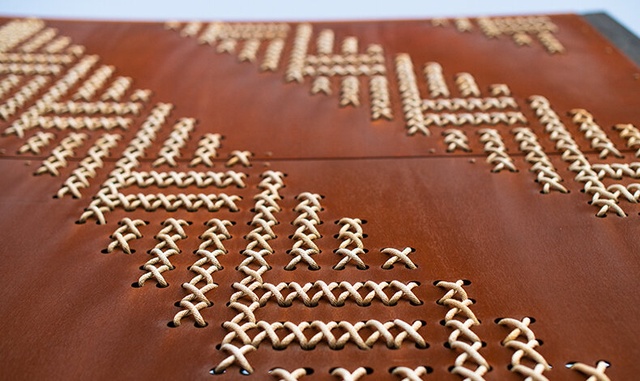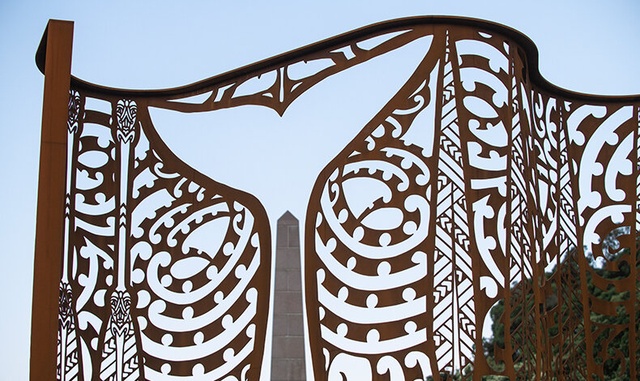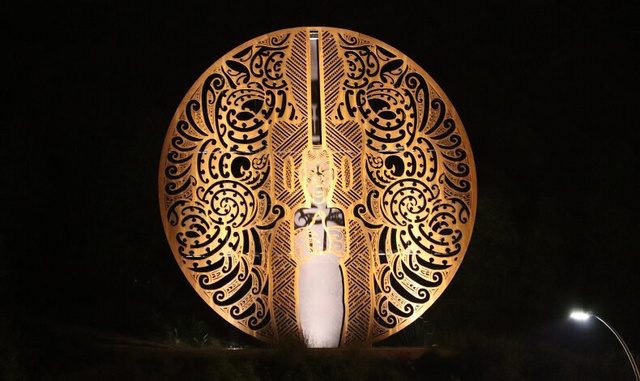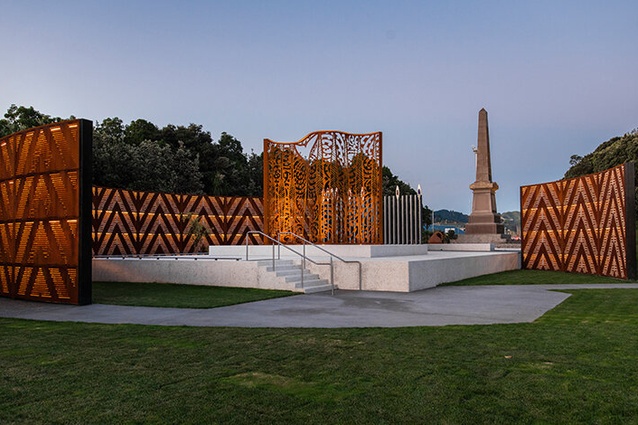Boffa Miskell: Sculptures tell the story of early Polynesian navigators
The firm's Kathleen Kinney and Cathy Challinor discuss a Gisborne monument that has been reimagined to honour the first explorers to arrive in Aotearoa.
Tangata Whenua hold the knowledge, narratives and mauri of place. We understand the importance of whakapapa and that our connections to whenua are woven through intergenerational connections of people, land, sea and sky.
Acknowledging tangata whenua through embedding the legends, history, traditional knowledge, tikanga – customs and spiritual forces – forms a strong relationship to people and their place for the purpose of a better design outcome.
The Puhi Kai Iti/Cook Landing project sought to reveal narratives associated with the first navigators and explorers to arrive in New Zealand and provide a balanced representation of history in this significant place.

For decades, the only visual representation of the significance of the site was a 1906 stone monument to Captain James Cook. There was no acknowledgment of the early Polynesian navigators, led by Māia, who landed at Tawararo (Kaiti Beach) some 750 years earlier; nor of Tangata Whenua who cared for the land in the intervening time, nor indeed of Aotearoa itself.
Working closely with Nick Tupara of Ngāti Oneone, design lead Cathy Challinor of Boffa Miskell sought to reinterpret and balance the narrative, retelling the stories of the first arrivals, and reconnecting Tangata Whenua.
Cherished outcomes include Tukutuku panels, woven by local weavers using a design gifted by the local Marae. The scale and arrangement of these pieces allow visitors to arrive at the site in the way of their choosing – starting with the Polynesian navigators or the Cook story – and allow each story to hold its own space. The waita in the panels (credited to Māia) was used as an aid to navigation to Aotearoa.

The new Ikaroa sculpture reflects the scale of the Cook Monument but takes a different form. The wavelike design and whale-shaped opening references the nautical migration told through whales and their significance to navigation.
Above, on Ruatanuika lookout, a circular sculpture honours a significant tipuna – Te Maro, the grandson of the rangatira Rakai a Tane, who was killed at the Endeavour arrival in 1769.
Te Taumata-o-Tītīrangi is an important cultural and spiritual landscape of Ngāti Oneone and Te Tairawhiti. The maunga has been undergoing restoration of its flora for the last five years with the vision to restore the landscape and for the reconnection of iwi identity and prosperity of Ngāti Oneone. This project visually restores the link between maunga ki moana (mountain to sea).
Material selection was informed by the marine environment and the required scale and durability. Fine-gauge Corten steel was selected for the tukutuku panels, which allowed these elements to bend naturally to the radius needed without distortion to the design pattern.

The material is also used for the Ikaroa sculpture, which has been positioned on a white concrete plinth to elevate and enhance its presence, in relation to the existing James Cook monument; bringing balance between the narratives.
Made in three segments, the highly-detailed pattern was precision-cut into the steel. Nearby, oversized hue (gourds) made of pigment-integrated ferrocement render over a wire frame represent Maia’s arrival and the subsequent development of cultivation skills.
All the elements were fabricated locally, adding another dimension of reconnection and contextualisation to the project.
Design team: Boffa Miskell (Lead Consultant) along with Artist Nick Tupara; Storybox, WSP-Opus, MHL Lighting, Novare Design, Civil Project Solutions, Currie Construction
Client: Gisborne District Council, Department of Conservation
This article was first published on the Landscape Architecture Aotearoa website, which is published by the New Zealand Institute of Landscape Architects (NZILA).










